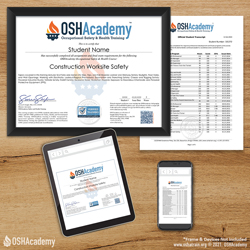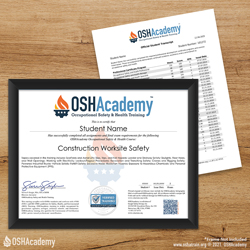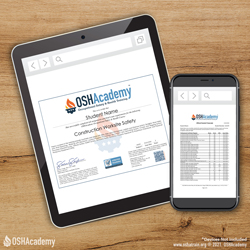Introduction
Nearly 6.5 million people work at approximately 252,000 construction sites across the nation on any given day. The fatal injury rate for the construction industry is higher than the national average in this category for all industries.
For any part of the contract work, contractors or subcontractors cannot require any laborer or mechanic employed in the performance of the contract to work in surroundings or under working conditions that are unsanitary, hazardous, or dangerous to their health or safety.
Potential Hazards for workers in construction include the following:
- falls (from heights)
- trench collapse
- scaffold collapse
- electric shock and arc flash/arc blast
- failure to use proper personal protective equipment
- repetitive motion injuries
Course Objectives
| ID | Objective |
|---|---|
| TO 1.0 | Achieve a minimum score of 70% on the final course assessment. |
| LO 1.1.1 | Describe the hazards and safe work practices associated with scaffolds and aerial lifts. |
| LO 1.2.1 | Describe the OSHA requirements, hazards, and safe work practices associated with slips, trips, and falls. |
| LO 1.3.1 | Discuss ladder and stairway safety practices and how to prevent slips, trips, and falls. |
| LO 1.4.1 | Describe electrical hazards and protective measures to protect against electrocution. |
| LO 1.5.1 | Describe the OSHA requirements, hazards, and safe work practices associated with excavation and trenching. |
| LO 1.6.1 | Describe the OSHA requirements, hazards, and safe work practices associated with operating cranes and rigging. |
| LO 1.7.1 | Describe powered industrial truck, crane, and rigging safety best practices. |
| LO 1.8.1 | Describe OSHA Hazard Communication Standard requirements, hazards, and safe work practices while working with hazardous chemicals. |
| LO 1.9.1 | Describe OSHA requirements, hazards, and safe work practices for exposure to excessive noise, radiation, and asbestos. |
| LO 1.10.1 | Discuss the various types of personal protective equipment and fall protection methods in construction. |
| LO 1.11.1 | Describe requirements for working safely within confined spaces in construction. |
Key: Terminal Objective (TO), Learning Objective (LO)



